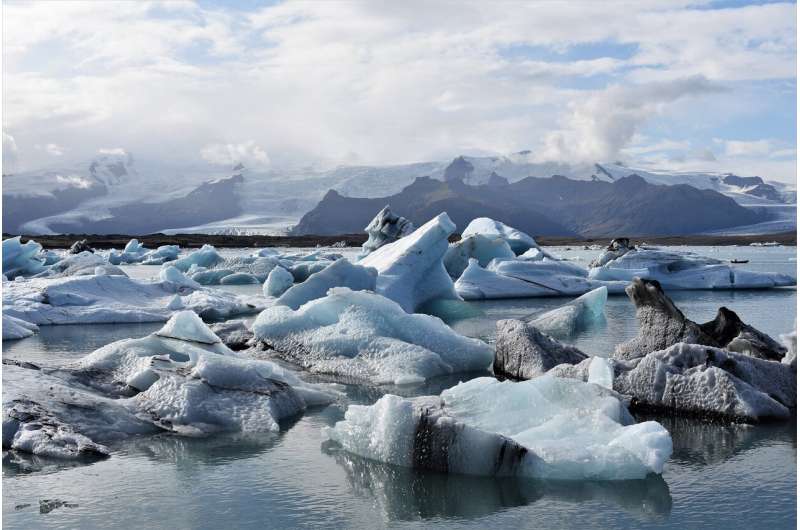Sea ice kept oxygen from reaching deep ocean during last ice age

Extensive sea ice covered the world's oceans during the last ice age, which prevented oxygen from penetrating into the deep ocean waters, complicating the relationship between oxygen and carbon, a new study has found.
"The sea ice is effectively like a closed window for the ocean," said Andreas Schmittner, a climate scientist at Oregon State University and co-author on the paper. "The closed window keeps fresh air out; the sea ice acted as a barrier to keep oxygen from entering the ocean, like stale air in a room full of people. If you open the window, oxygen from outside can come in and the air is not as stale."
The findings, published recently in Nature Geoscience, challenge previous assumptions about the relationship between oxygen and carbon dioxide in deep ocean waters. Understanding this relationship gives researchers important insights into how the world's oceans may respond to climate change, said Schmittner, a professor in OSU's College of Earth, Ocean, and Atmospheric Sciences.
The ocean plays an important role in the carbon cycle; carbon dioxide from the atmosphere dissolves in surface waters, where algae turn the carbon into organic matter. Respiration of that organic matter removes oxygen as carbon sinks to the deep ocean. The process of transferring carbon from the surface of the ocean to the deep is known as the biological pump.
Currently, the ocean is losing oxygen and that trend is expected to continue because the solubility of oxygen decreases as temperatures warm. That would lead scientists to expect higher oxygen concentrations during the last ice age, when oceans were colder, Schmittner said, but sediment collected previously from below the sea floor shows lower oxygen levels in the deep ocean during that period.
Researchers have previously theorized that the biological pump was stronger during the last ice age, increasing carbon respiration. But that assumes that surface ocean oxygen is equilibrated with the atmosphere, Schmittner said.
In their new work, Schmittner and his colleagues, Ellen Cliff and Samar Khatiwala of the University of Oxford, used modeling to investigate the lower oxygen levels in the deep ocean.
They found that disequilibrium played an important role in the carbon cycle. Deep ocean oxygen concentrations were reduced because surface waters were less equilibrated with the atmosphere. The disequilibrium was a result of the vast sea ice mainly over the Southern Ocean, as well as higher iron fertilization from the ice age atmosphere, which was dustier, Schmittner said.
That means the deep ocean oxygen levels are informed not just by the biological pump process, but also by the sea ice, or lack of, just as a room's air quality may change by the opening or closing of a window, he said.
The researchers' method to understand the role of sea ice and other processes in the ocean carbon and oxygen cycles could also be applied to future climate modeling, Schmittner said.
"Current models cannot separate effects from the biological pump on ocean oxygen from sea ice or other influences," he said. "This changes our understanding of the process and the reasons for those changes."
More information: Ellen Cliff et al, Glacial deep ocean deoxygenation driven by biologically mediated air–sea disequilibrium, Nature Geoscience (2021). DOI: 10.1038/s41561-020-00667-z
Journal information: Nature Geoscience
Provided by Oregon State University





















